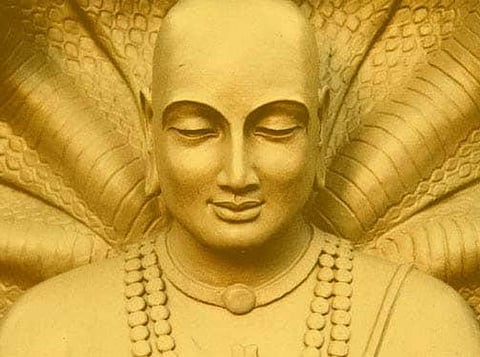While Patanjali is revered as a yoga guru, the fact that he was one of the three pioneering Sanskrit grammarians of ancient India, the others being Panini and Katyayana, has been obscured from public view.
Commenting on Katyayana's Varttika and Panini's Ashtadhyayi, Patanjali elaborated on selected rules of grammar in his masterpiece, Mahabhashya, or the great commentary.
The development of language was given a proper form by Patanjali. He carves out details related to phonology and accent with utmost ease and discusses etymology in depth, but leaves out syntax, as it is relatively redundant in the inflexional language that he scrutinized.


